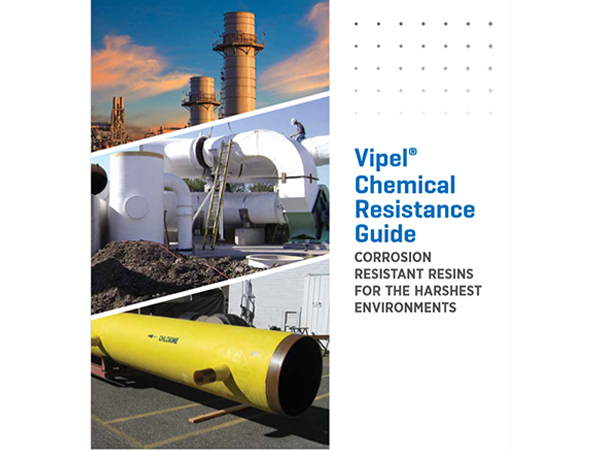
-
 Afrikaans
Afrikaans -
 Albanian
Albanian -
 Amharic
Amharic -
 Arabic
Arabic -
 Armenian
Armenian -
 Azerbaijani
Azerbaijani -
 Basque
Basque -
 Belarusian
Belarusian -
 Bengali
Bengali -
 Bosnian
Bosnian -
 Bulgarian
Bulgarian -
 Catalan
Catalan -
 Cebuano
Cebuano -
 China
China -
 China (Taiwan)
China (Taiwan) -
 Corsican
Corsican -
 Croatian
Croatian -
 Czech
Czech -
 Danish
Danish -
 Dutch
Dutch -
 English
English -
 Esperanto
Esperanto -
 Estonian
Estonian -
 Finnish
Finnish -
 French
French -
 Frisian
Frisian -
 Galician
Galician -
 Georgian
Georgian -
 German
German -
 Greek
Greek -
 Gujarati
Gujarati -
 Haitian Creole
Haitian Creole -
 hausa
hausa -
 hawaiian
hawaiian -
 Hebrew
Hebrew -
 Hindi
Hindi -
 Miao
Miao -
 Hungarian
Hungarian -
 Icelandic
Icelandic -
 igbo
igbo -
 Indonesian
Indonesian -
 irish
irish -
 Italian
Italian -
 Japanese
Japanese -
 Javanese
Javanese -
 Kannada
Kannada -
 kazakh
kazakh -
 Khmer
Khmer -
 Rwandese
Rwandese -
 Korean
Korean -
 Kurdish
Kurdish -
 Kyrgyz
Kyrgyz -
 Lao
Lao -
 Latin
Latin -
 Latvian
Latvian -
 Lithuanian
Lithuanian -
 Luxembourgish
Luxembourgish -
 Macedonian
Macedonian -
 Malgashi
Malgashi -
 Malay
Malay -
 Malayalam
Malayalam -
 Maltese
Maltese -
 Maori
Maori -
 Marathi
Marathi -
 Mongolian
Mongolian -
 Myanmar
Myanmar -
 Nepali
Nepali -
 Norwegian
Norwegian -
 Norwegian
Norwegian -
 Occitan
Occitan -
 Pashto
Pashto -
 Persian
Persian -
 Polish
Polish -
 Portuguese
Portuguese -
 Punjabi
Punjabi -
 Romanian
Romanian -
 Russian
Russian -
 Samoan
Samoan -
 Scottish Gaelic
Scottish Gaelic -
 Serbian
Serbian -
 Sesotho
Sesotho -
 Shona
Shona -
 Sindhi
Sindhi -
 Sinhala
Sinhala -
 Slovak
Slovak -
 Slovenian
Slovenian -
 Somali
Somali -
 Spanish
Spanish -
 Sundanese
Sundanese -
 Swahili
Swahili -
 Swedish
Swedish -
 Tagalog
Tagalog -
 Tajik
Tajik -
 Tamil
Tamil -
 Tatar
Tatar -
 Telugu
Telugu -
 Thai
Thai -
 Turkish
Turkish -
 Turkmen
Turkmen -
 Ukrainian
Ukrainian -
 Urdu
Urdu -
 Uighur
Uighur -
 Uzbek
Uzbek -
 Vietnamese
Vietnamese -
 Welsh
Welsh -
 Bantu
Bantu -
 Yiddish
Yiddish -
 Yoruba
Yoruba -
 Zulu
Zulu
frp tank
The Rise of FRP Tanks A Sustainable Solution for Storage Needs
In the ever-evolving world of industrial materials, Fiber Reinforced Polymer (FRP) has emerged as a transformative option for various applications, particularly in the construction of storage tanks. These innovative tanks are gaining popularity across multiple sectors due to their numerous advantages over traditional materials such as steel and concrete. This article explores the benefits, applications, and future of FRP tanks.
To begin with, one of the most significant advantages of FRP tanks is their exceptional resistance to corrosion. Traditional storage tanks, especially those made of steel, are prone to rust and deterioration when exposed to harsh chemicals or environmental conditions. This not only compromises the structural integrity of the tanks but can also lead to costly repairs and downtime. FRP tanks, however, are designed to withstand corrosive agents, making them ideal for storing a variety of substances, including acids, alkalis, and even wastewater. As a result, industries involved in chemical processing, water treatment, and oil and gas can rely on FRP tanks for long-lasting and dependable storage solutions.
.
Another noteworthy benefit of FRP tanks is their flexibility in design. Manufacturers can produce tanks in various shapes, sizes, and configurations, allowing for customization to meet the specific needs of different applications. This versatility is particularly valuable in industries that require tailored solutions for unique storage challenges. Furthermore, the ability to integrate various features, such as manholes, access ports, and level monitoring systems, enhances the functionality of FRP tanks, making them even more attractive to potential users.
frp tank

Environmental concerns are also driving the popularity of FRP tanks. With an increasing emphasis on sustainability, industries are seeking materials that minimize their ecological footprint. FRP tanks are often made using recyclable materials, and their long service life reduces the need for frequent replacements. Additionally, the lightweight nature of FRP contributes to lower emissions during transportation, aligning well with global efforts to reduce carbon footprints. As sustainability becomes a focal point for many companies, FRP tanks present an effective solution that supports environmental responsibility.
The applications of FRP tanks are vast and varied. They are commonly used in the chemical industry for storage of reactive or corrosive substances. Water treatment facilities employ FRP tanks for holding and processing wastewater, while agricultural sectors utilize them for storing fertilizers and other essential liquids. Moreover, the oil and gas industry has started adopting FRP tanks for various applications, including storage for hydrocarbons, owing to their resistance to corrosive crude oil.
Looking to the future, the market for FRP tanks is expected to expand significantly. Advances in manufacturing technology are likely to improve the strength and durability of these tanks even further. Additionally, with an increasing number of regulations surrounding environmental protection and waste management, the demand for reliable and sustainable storage solutions will continue to rise. The versatility and performance of FRP tanks position them as a preferred choice for many industries seeking innovative solutions.
In conclusion, FRP tanks represent a significant advancement in storage technology, offering numerous benefits such as corrosion resistance, lightweight construction, design flexibility, and environmental sustainability. As industries face growing challenges in storage and environmental compliance, the adoption of FRP tanks is poised to increase, reinforcing their status as a viable and forward-thinking solution for a wide range of storage needs.
Latest news
-
Exploring the Benefits of Top Hammer Drifter Rods for Enhanced Drilling PerformanceNewsJun.10,2025
-
High-Precision Fiberglass Winding Machine for GRP/FRP Pipe Production – Reliable & Efficient SolutionsNewsJun.10,2025
-
FRP Pipes & Fittings for Shipbuilding - Corrosion-Resistant & LightweightNewsJun.09,2025
-
Premium FRP Flooring Solutions Durable & Slip-ResistantNewsJun.09,2025
-
Premium Fiberglass Rectangular Tanks Durable & Lightweight SolutionNewsJun.09,2025
-
Tapered Drill String Design Guide Durable Performance & UsesNewsJun.09,2025









